4 Days in Tokyo: Full Breakdown
This post may contain affiliate links, which means I’ll receive a commission if you purchase through my link, at no extra cost to you.
Our trip to Japan was bookended by our time in Tokyo, where we flew in and out of. Though we didn’t intentionally visit in December, we ended up being blessed with blue skies every day. While it was cold (upper 40s/low 50s Fahrenheit), it was perfectly bearable and much warmer than Chicago!
Our flight from LAX to Tokyo Narita airport got in around 5:30PM and thankfully, clearing customs only took a few minutes. We had filled out all the online forms and downloaded the various QR codes in advance, so that helped speed things along. For whatever reason, hotels in Tokyo were insanely expensive on Christmas Eve, so we stayed at the Tobu Narita Airport Hotel and headed in to the city the next morning. The airport hotel was nothing spectacular, but certainly did the job for a quick overnight stay.
Tokyo actually has 2 main airports – Narita and Haneda. Narita is about an hour from the city and Haneda is much closer, but if you’re flying from the US, you’ll likely find more options in/out of Narita. Just factor in the relative location of each airport into your travel plans.
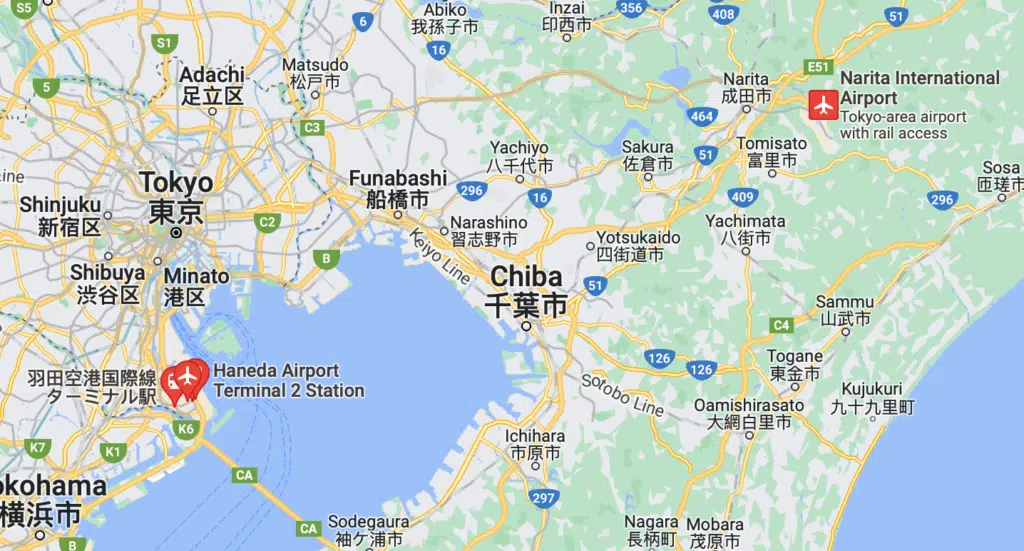
Day 1
After waking up, we checked out of our hotel and took the free shuttle (which was actually a coach bus) back to the airport, got breakfast from a kiosk, picked up our JR passes from the ticket office and got seats on the Narita Express, which took us to Shibuya Station, where we stored our luggage for the day in coin lockers.
Our first full day in the city was Christmas Day, but as only 2% of Japan is Christian, this isn’t a major holiday like it is in the United States. There were Christmas decorations around, but it’s celebrated more like how we celebrate Valentine’s Day. This meant that all the shops were operating business as usual.
Shibuya Crossing
One of the best examples of organized chaos in Japan is Shibuya Crossing (AKA Shibuya Scramble), a massive intersection where up to 3,000 people can cross at one time. Walking in the intersection is truly an experience but it was surprisingly orderly and calm despite the sheer volume of people.
If you’re going to visit Shibuya Crossing, walking across it is a must, but it’s also cool to get a bird’s eye view. There are several different places to do this, including a Starbucks that’s on the second floor of one of the buildings.
Shibuya Sky
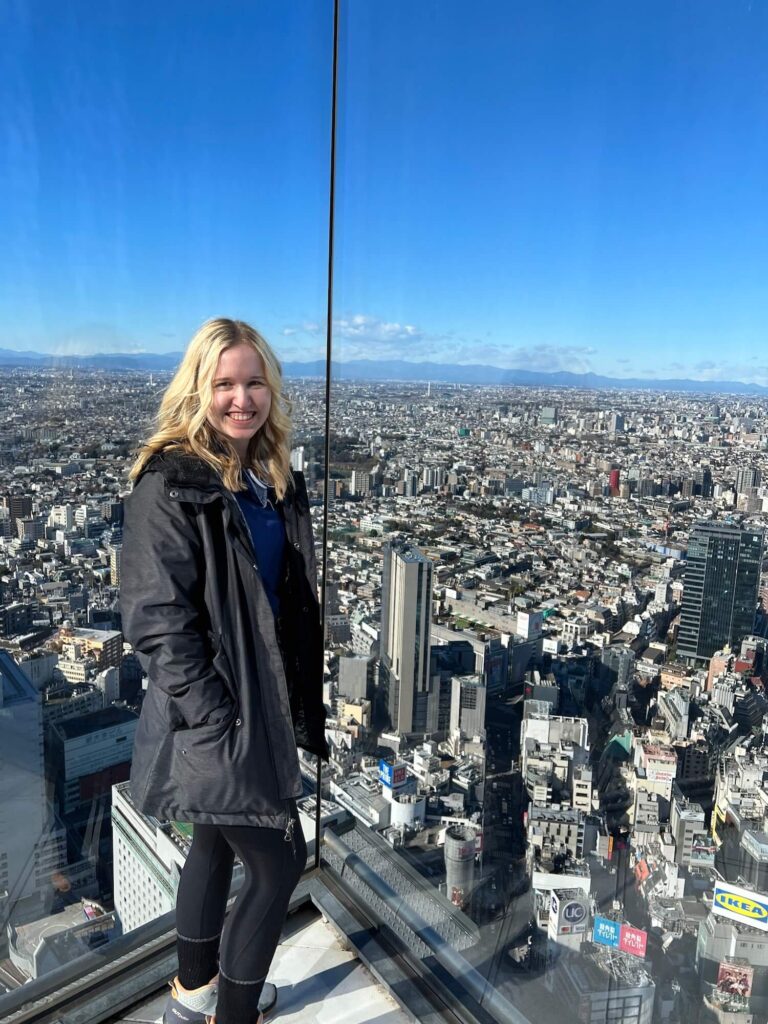
To get a better view of the city (and to see Shibuya Crossing from above), we went to Shibuya Sky. We got really lucky that there were tickets available for purchase while we were there – by the time we finished, they were sold out for the rest of the day! You are not allowed to bring any backpacks, hats, selfie sticks, strollers, etc. to Shibuya Sky as they don’t want anything bulky or anything that could fly away. However, they do have lockers available and places to secure other items. Thomas had originally put his backpack in the locker but forgotten about his hat and was reprimanded by the staff until he stowed that away too. There are 2 viewing levels, the upper of which even includes a helipad on the roof.
Free Walking Tour
I’ve never taken a free walking tour before (though I know they are available in many major cities) but I was trying to keep costs from getting too out of hand on this last-minute trip so I signed up for the Harajuku Meiji Shrine tour from Tokyo Localized (you do have to sign up in advance). Our tour ended up being led by Dai, the founder of the company, and he did a great job of explaining the history and culture of the area as we walked though the Meiji Shrine, Takashita Street, and passed the famous sake barrels and more. He showed us the proper way to enter a shrine, when to bow, how to properly wash our hands in the traditional way, etc. While the tour is “free,” the guides do work for tips, so make sure to give what you feel is fair (we tipped 3000 yen for 2 people, close to $20).
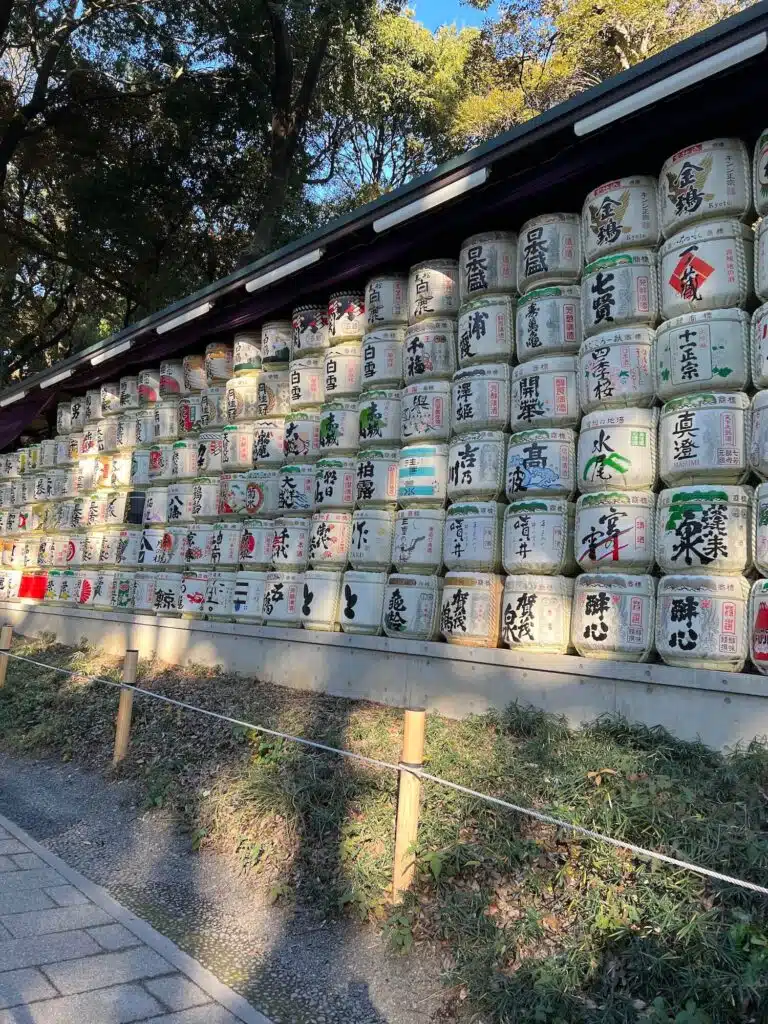
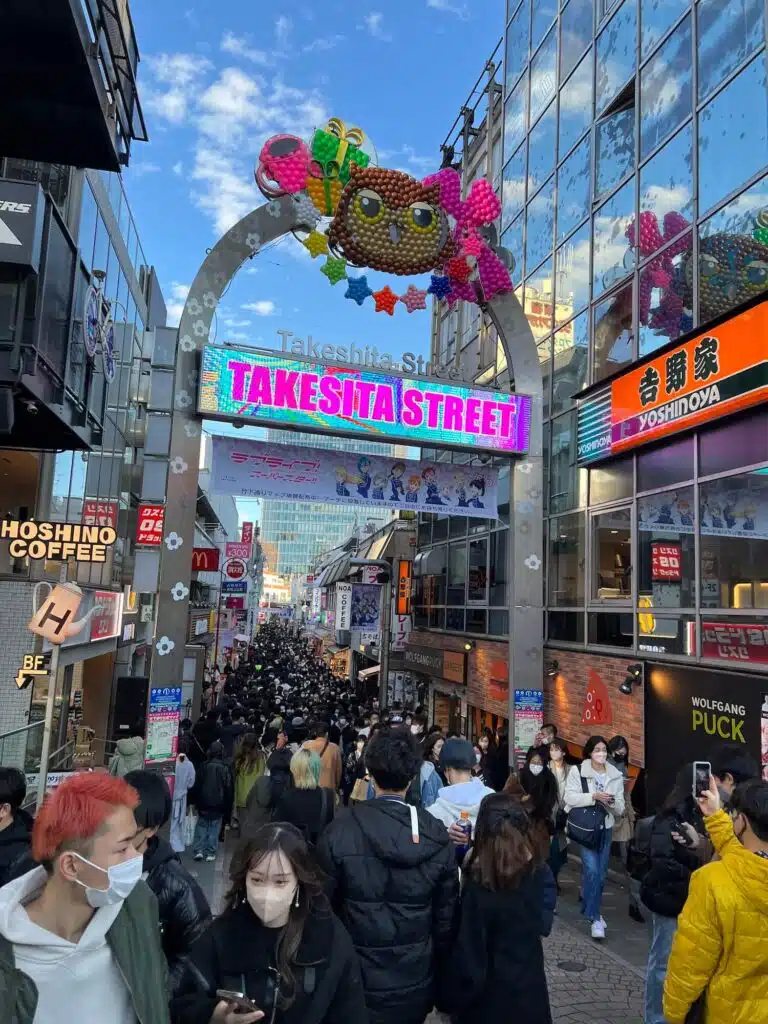
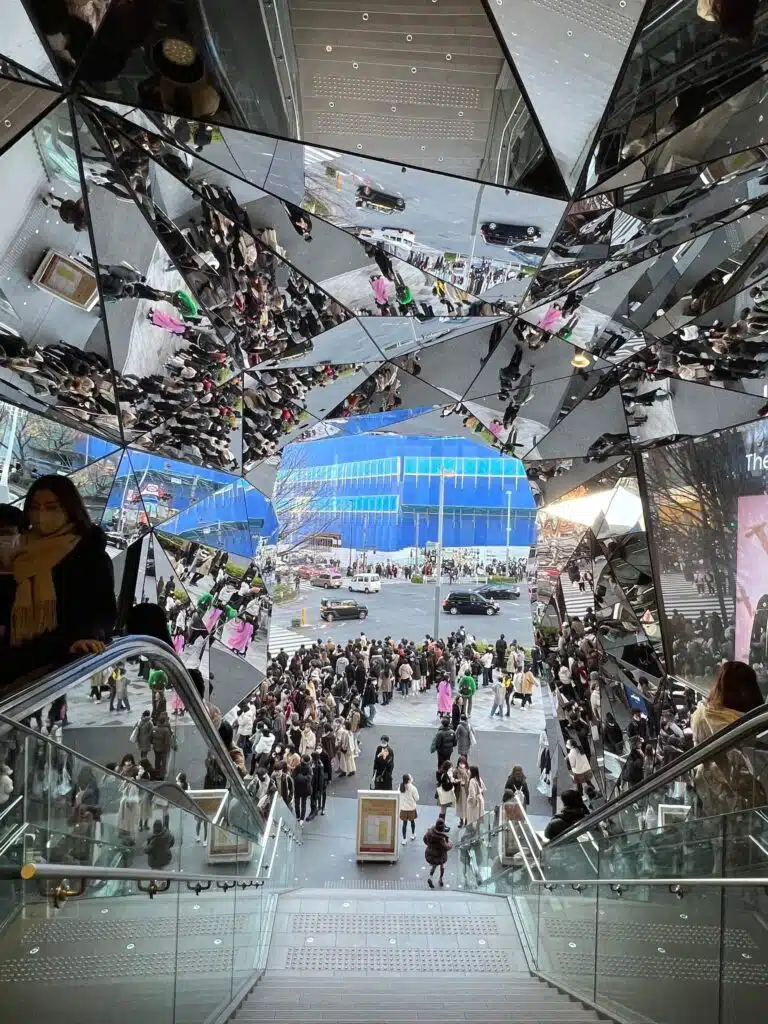
We learned a lot and had such a good experience on this tour that we ended up booking another free walking tour though the same company while we were in Kyoto and I’m planning to incorporate more free walking tours into future trips.
GoKarting Through Tokyo
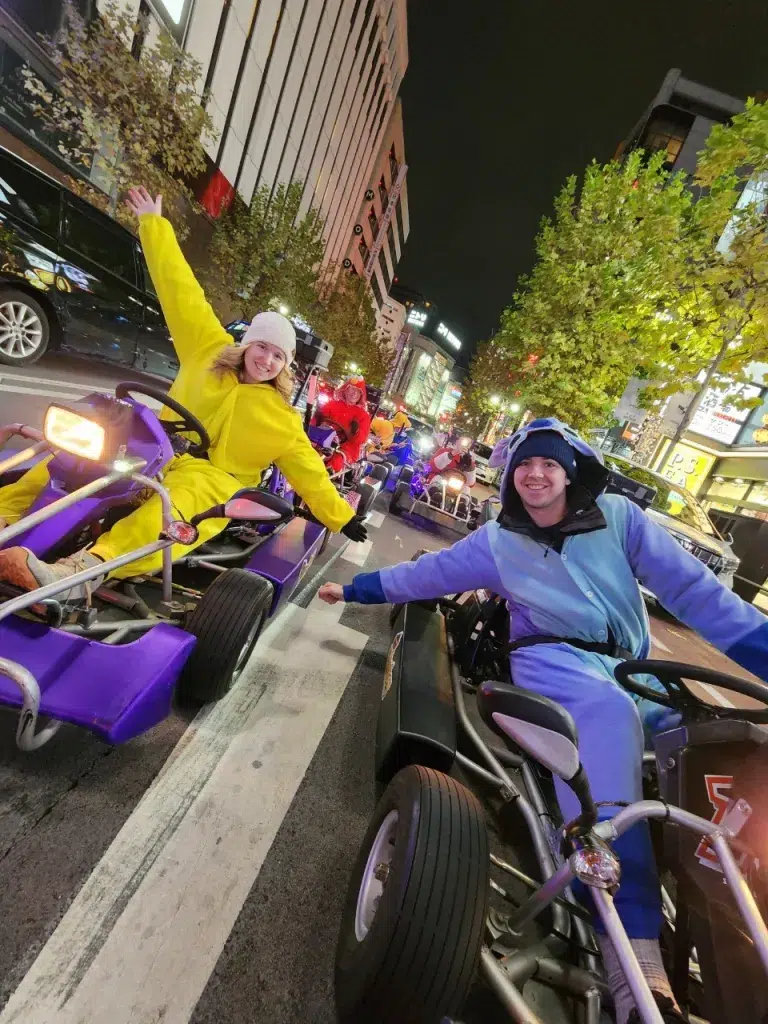
Probably the most absurd thing we did on our trip was drive around on the streets of Tokyo in go karts dressed as cartoon characters. It was a little scary since you are driving on real streets with real cars passing (and they do drive on the left side of the road), but it was really fun. It really felt like Mario Kart come to life. The locals we drove by were also super into it and were waving, clapping, and taking pictures of us!
One critical thing to know about this excursion is that it does require you to have an International Driver’s Permit (IDP) in addition to your driver’s license. This was very clear at the time of booking. I got mine at AAA before I left Chicago and I just needed to bring passport photos (which I got at Walgreens), $20, my driver’s license, and the application. The whole process only took about 10 minutes.
Shinjuku
We went to Shinjuku to walk around and check out the area and wandered into a random ramen shop for dinner (I didn’t even get the name!). Afterwards, we checked out a Don Quijote store, which is a chain in Japan and truly an experience all its own to visit. It has chaotic dollar store energy but sells everything from Kit Kats in all sorts of flavors to electronics to beauty products to luxury goods like Rimowa suitcases that retail for over $1000. The store spanned several floors and each floors seemed to be more expensive than the one below, with the priciest goods hidden away at the top.
After we were done walking around Shinjuku, we grabbed our bags from the locker and made our way to the hotel.
Centurion Hotel Residential Akasaka
We stayed 3 nights in Akasaka, partially because I confused it with Asakusa, which I’d read was a great spot for tourists to stay. Despite my error, Akasaka was perfectly nice centrally located in the city so it was easy to get to all the things we wanted to see. The hotel had a table of amenities in the lobby in case we had forgotten anything like a toothbrush, hairbrush, face mask, etc. Like our hotels in Europe, we had 2 separate comforters on our bed. Our room also had a balcony and was big enough for a small living area, which is a big plus for a crowded city like Tokyo. We were never in the hotel very long except to sleep and we ended up opting out of housekeeping.
Day 2
Imperial Palace
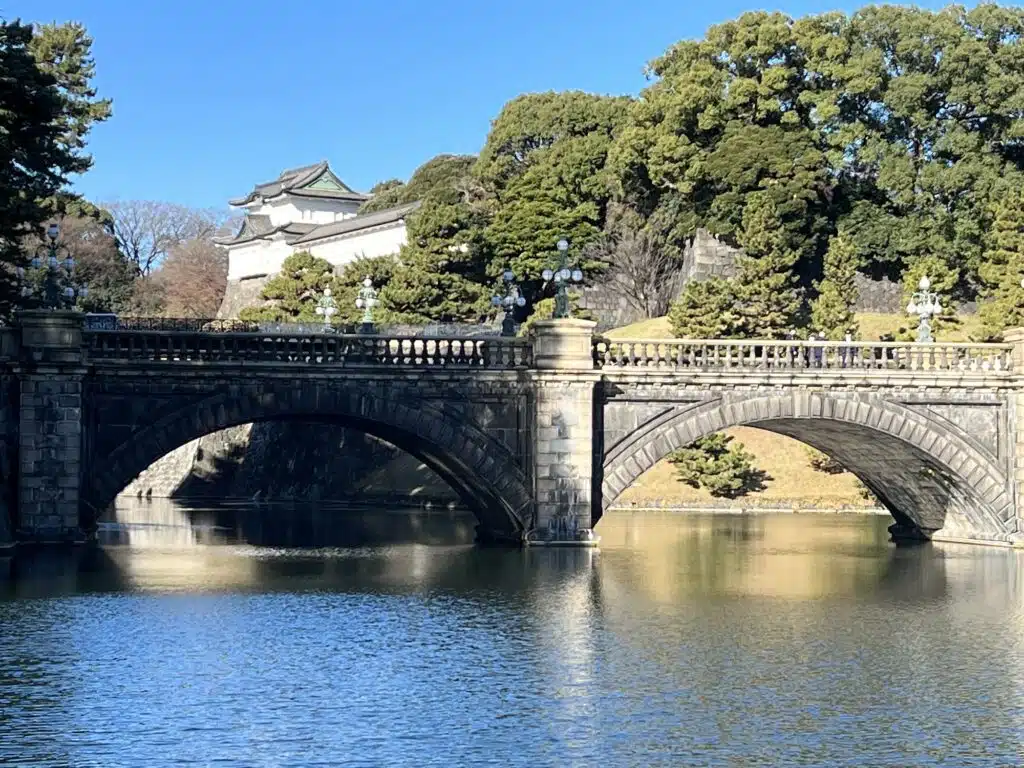
On our second day, we had not yet realized how much walking was going to be involved on this trip, so we opted to skip the train and walked 30 minutes to the Imperial Palace. Unfortunately, the Imperial Palace grounds are closed on Sundays and Mondays as well as December 28-January 3 for New Year’s. I didn’t realize this until day-of and we wouldn’t be in Tokyo any days it was open, but we still decided to walk there and see the palace from afar. When the palace grounds are open, you can see it via a guided tour of the palace grounds at 10AM and 1:30PM.
The actual palace itself is the home of the Imperial family to this day, so the main area is not open to the public (with the exception of a couple days per year), just the grounds.
Tokyo Skytree
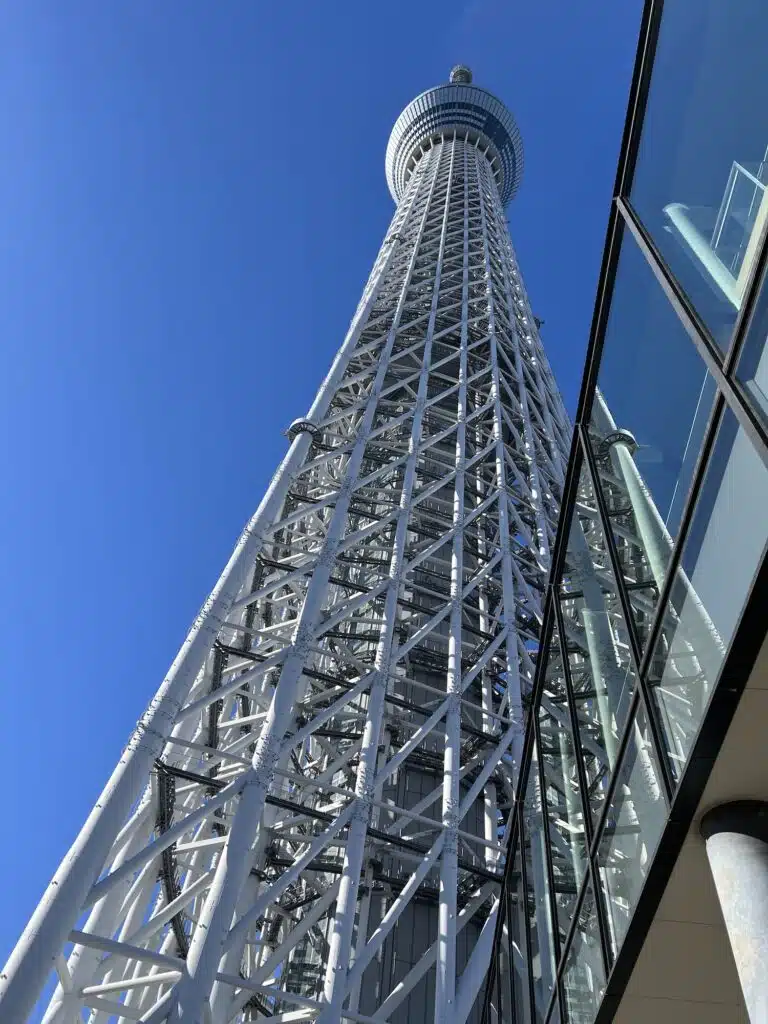
After we made our way from the Imperial Palace to Tokyo Skytree – the tallest building in Japan – we spent a lot of time walking around lost looking for where to buy tickets to go to the top. Once we finally found it (of course it was right near where we started our search), we bought tickets to go to both Floor350 and Floor450 (which respectively are 350 and 450 meters above the ground), though you can opt instead to just go to Floor350. There was no reservation required, but if you had purchased tickets in advance, you didn’t have to wait in as long of a line.
The tower definitely offered a unique perspective that showed you just how expansive Tokyo is. The only things that stopped the endless expanse of buildings were mountains or water. While the views were great, the top floor was uncomfortably warm due to all the glass windows and the fact that we were in long sleeves because it was December. There was also a section with a glass floor you could walk on, but I have found that after finally conquering my fear of glass floors and walking on several, they’re all kind of the same and a bit of a gimmick.
In the bottom floors of Tokyo Skytree (which are accessible for free) and in the adjacent building, there are tons of shops and restaurants to explore. Outside, there is also a vending machine that sells cake in a can.
Din Tai Fung
While the famous Taiwanese-based global restaurant chain definitely doesn’t qualify as Japanese food, I was so excited when I saw a sign for Din Tai Fung while we were walking around the shopping center in Tokyo Skytree. There was a short (5-10 min wait) before we were seated. I have eaten at the majority of US Din Tai Fung locations but never any abroad and was surprised to find a slightly different menu. The signature Xaio Long Bao were still there, but many dishes we typically order were missing, including my favorite garlic string beans. I could definitely tell the dishes had been adapted more to the local palate, but it was still a delicious lunch.
One thing that stuck out to me about dining in Japan is that while water is included with the meal like it is in the US, they rarely come around to refill your glass, so I’d bring a bottle of water with you when you stop to eat.
Sensō-ji & Shopping Streets
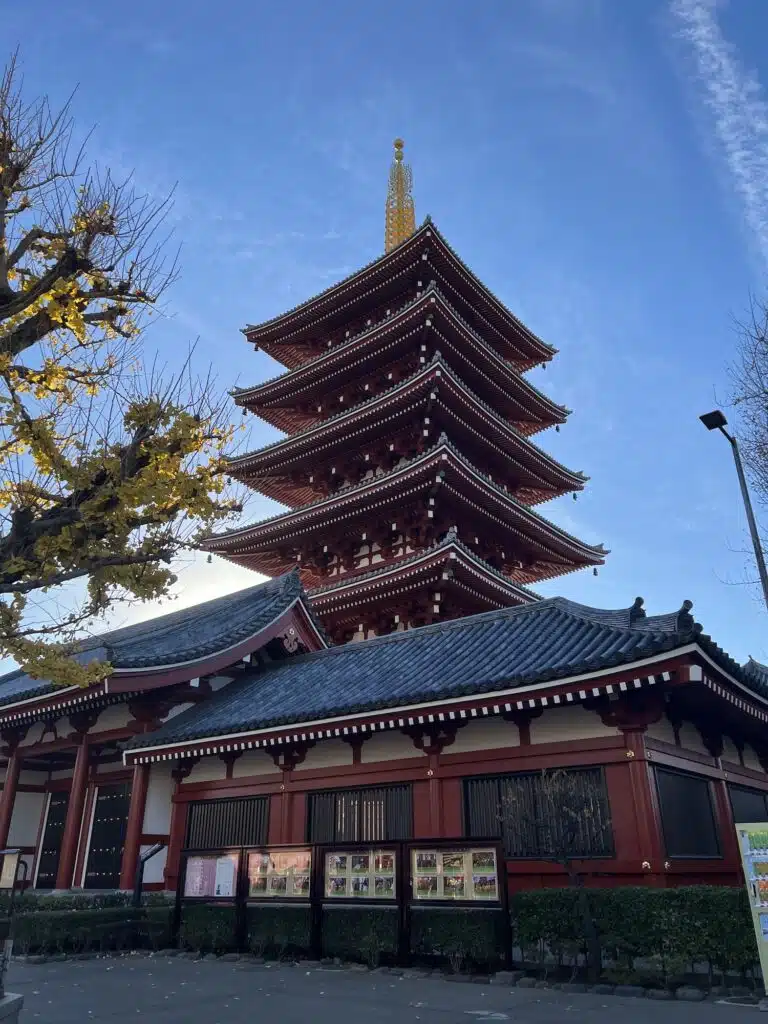
Located in Asakusa (the area I failed to book a hotel in) is Sensō-ji, Tokyo’s oldest temple, dating back to 645AD originally. However, it was destroyed in WWII and rebuilt (as with so much of Tokyo). With its bright red color and beautiful pagoda, it’s no wonder it’s one of the most famous temples in a city full of them. It is free to visit this temple and it’s open year-round.
Directly next to Sensō-ji is the Nakamise shopping street with tons of vendors selling mostly Japanese souvenirs. This was where Thomas and I bought 4 sets of beautiful chopsticks to bring home. Both the street and temple were packed while we were there, but as with all crowded areas we visited in Japan, it was organized chaos.
Food Tour
We booked a food tour though Arigato Japan and met up with our guide, Harry, and another couple for the tour in Ginza. Our first stop was for a red bean bun and I was surprised how much I liked it – in the US we typically have beans with savory foods, but this was a sweet bean flavor and more of a dessert.
Our next stop was the rooftop garden of the Ginza Six, which is free and open to the public, to enjoy the views of the city. Ginza is a high-end shopping area in Tokyo with lots of international luxury brands represented, from Louis Vuitton to Hermès.
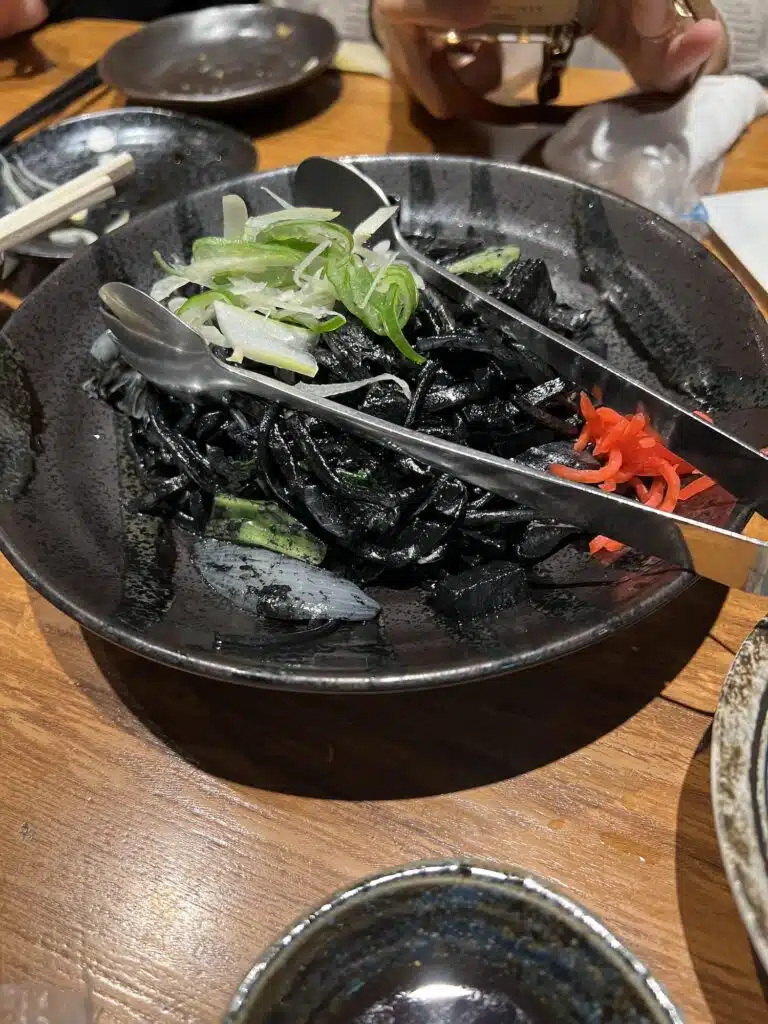
From there, we went to a restaurant that specialized in Okinawa food. Okinawa is the southern-most island of Japan and is often referred to as the “Hawaii of Japan.” It was under American control from the end of WWII to 1972. We tried several dishes at this restaurant, but my favorite was the squid ink noodled, though the black ink definitely stained my mouth for the rest of the day!
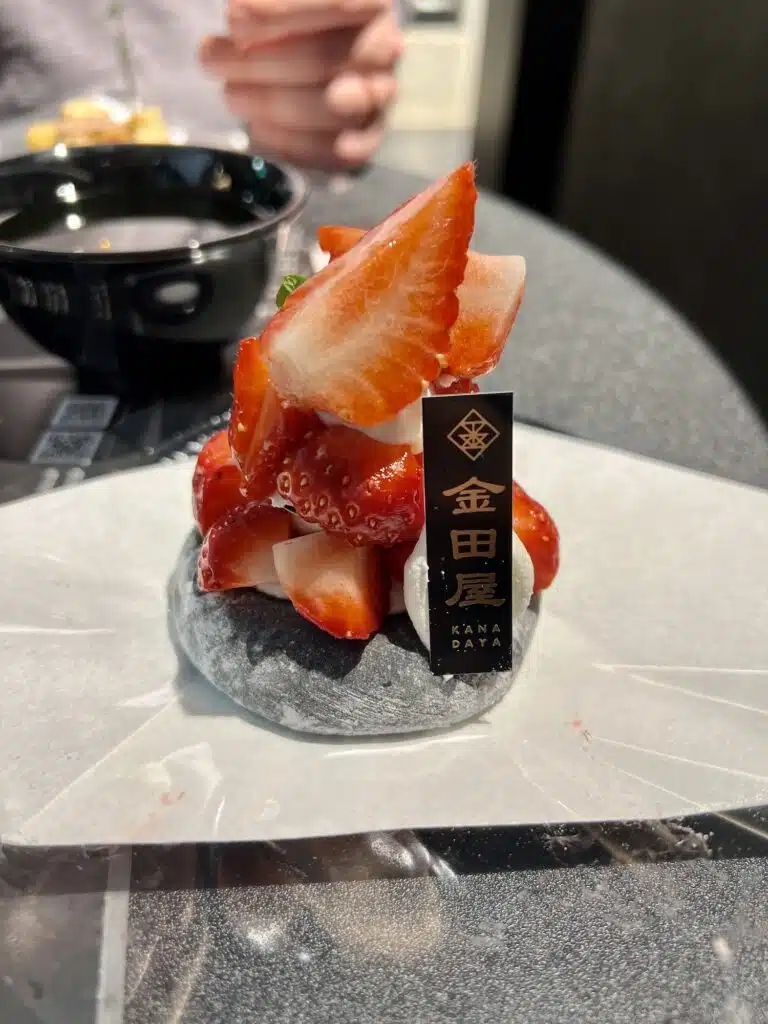
We stopped at one more sit-down restaurant to try Udon noodles (YUM) before making one last stop for dessert, where we had extravagant diafuku mochi. Before we parted ways our guide also took us down a hidden alley to see a tiny shrine that felt so out of place surrounded by such expensive real estate, but it was really cool.
We tipped our guide, but then as we were walking away it occurred to me that maybe we shouldn’t have. Tipping is not common practice in Japan like it is in the US. The free walking tour was a major exception because the tour itself is free so the guides work for tips, but for paid tours, it’s not expected. I certainly didn’t want to insult anyone by giving a tip!
Day 3
Mt. Fuji
Seeing Mt. Fuji was extremely high on my Japan bucket list and as it turns out, our accidental December timing was perfect, as December and January are the best time of year to see the mountain that is so often hidden by clouds. On a clear day, you can actually see Mt. Fuji in the distance from Tokyo (which we were able to do when we were at Shibuya Sky) and from the bullet train between Tokyo and Kyoto (if you’re sitting on the right-hand side of the train). However, to get a closer view, you need to take a day trip from Tokyo at the very least, which is exactly what we did.
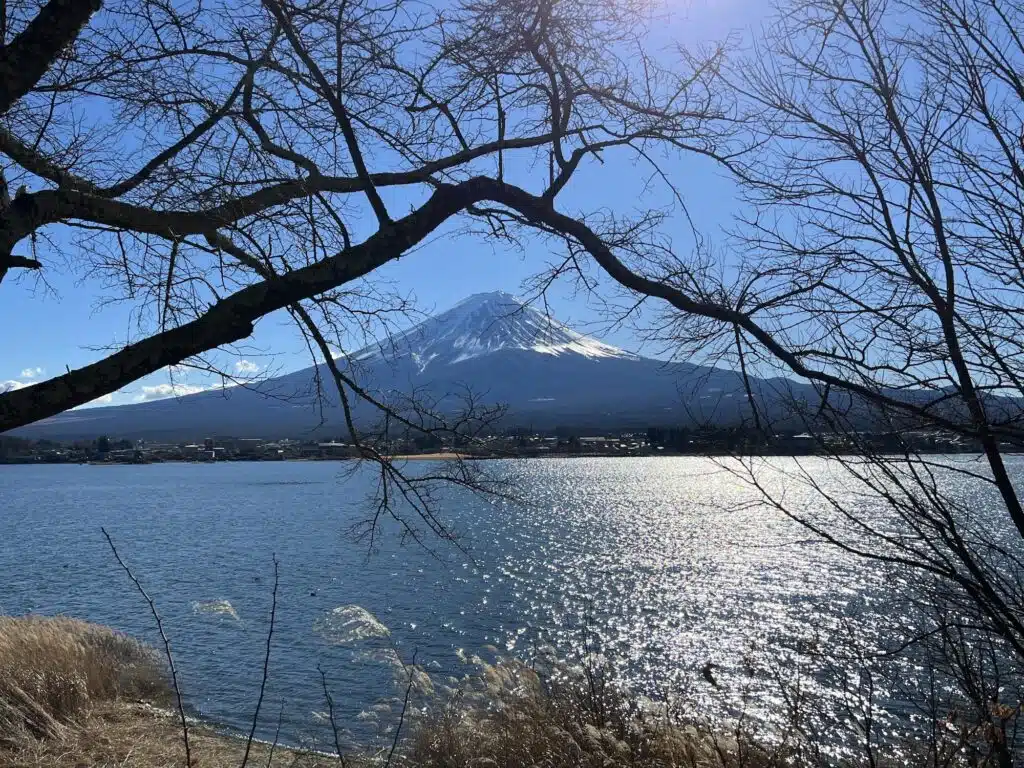
I had found this excursion on Viator for a private tour with a local guide. This tour ended up exceeding all of my expectations. Our guide, Chris, is an American who has lived in Japan for 30+ years and calls the area around Mt. Fuji home with his wife. It took a couple of trains to get from our hotel to Kawaguchiko Station and we ended up having to stand for about half the journey because we didn’t have reserved seats, but when we arrived, Chris was waiting for us with a sign with my name on it. He even helped us buy bus tickets back to Tokyo for the end of the day (all the trains were already sold out).
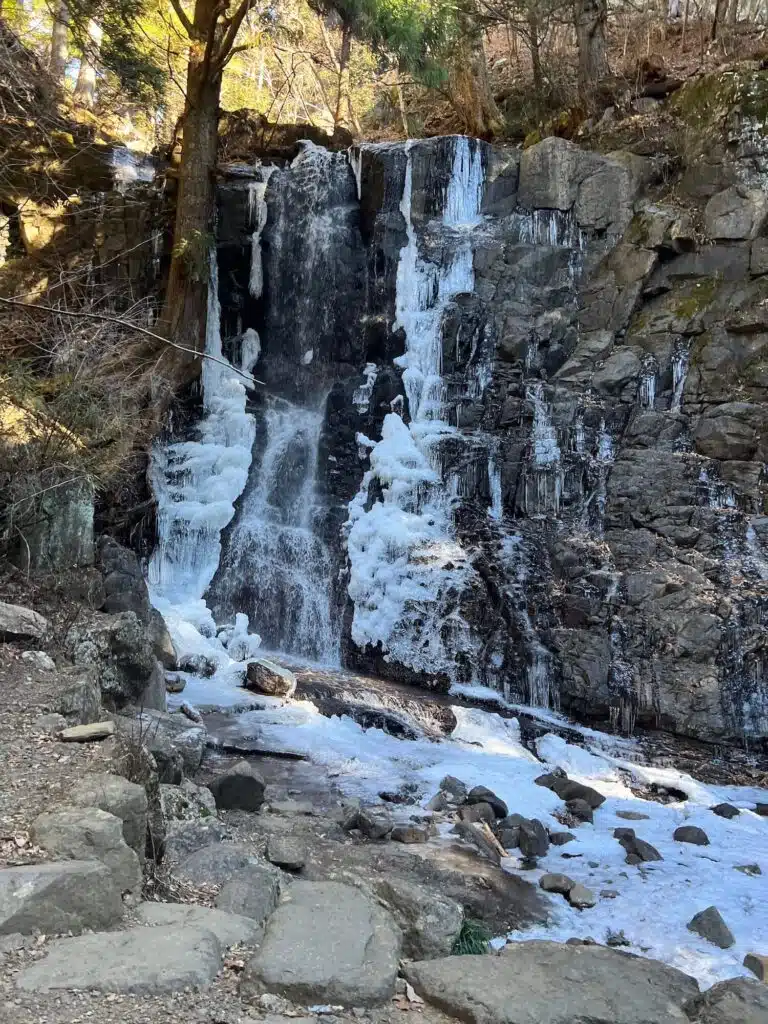
After our return trip was secured, Chris took us around to all of his favorite spots. We skipped the touristy areas and opted for even better hidden gem views of the mountain. We also visited a couple of shrines and temples and went on a few small nature walks to a half-frozen waterfall and cave. Chris was incredibly knowledgeable about the area and always made sure we had what we needed (gear, food/water, bathroom breaks, etc.). After spending a couple days in the biggest city in the world, it was so peaceful to be out in nature and away from crowds.
At the end of the day, Chris took us to a shop owned by one of his friends that sells Koshu Inden deer leather goods. They were beautiful and each pattern had a specific symbology behind it. Though not the cheapest souvenir, both Thomas and I got new wallets we are very happy with.
Chris made sure we got on the right bus and then we made our way back to Shibuya Station. The bus was a charter bus with a bathroom and just as comfortable of a journey as a train.
Nonbei Yokocho (AKA Drunkard’s Alley)
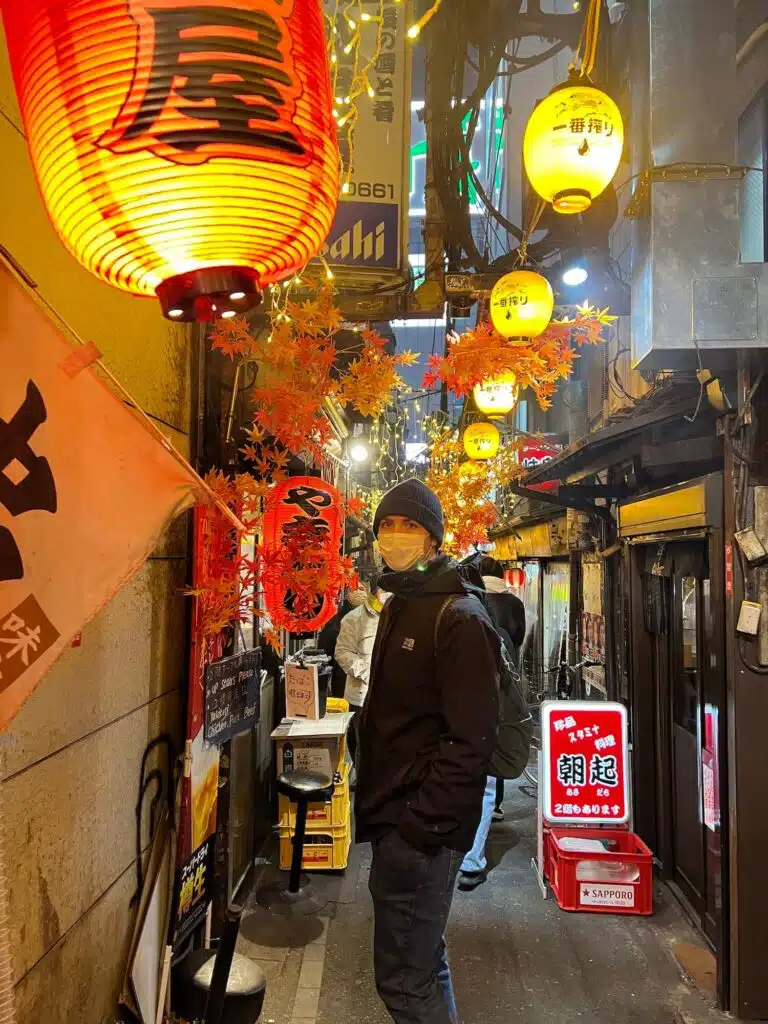
After we got back to Shibuya Station, we grabbed dinner at Eggslut (because I love it and can’t get it in Chicago) and then wandered down Nonbei Yokocho, which is referred to as Drunkard’s Alley in English. This alley is only about a block away from Shibuya Station but feels very out of place for the area. It’s a narrow street with restaurants that only seat ~10 people or less. It’s an incredibly popular tourist spot though, as it’s very Instagrammable, but that was also why we didn’t love it. It felt inauthentic with so many people clearly just there for the content and not to enjoy the culture or learn the history – this is a very fine line I try to walk on trips as I love capturing what I see but never want it to detract from the sites themselves.
Day 4
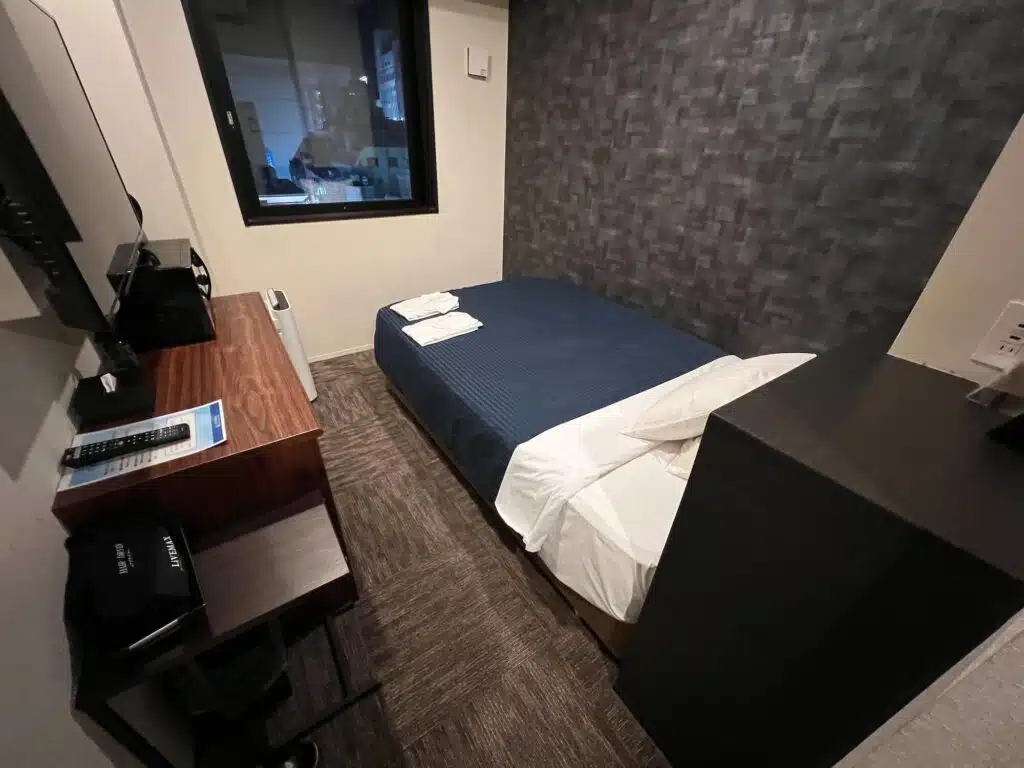
Our last day in Tokyo was actually several days after the first 3 as we spent 4 days between Kyoto and Osaka in the middle (I’ll detail our travels there in a separate post). We arrived back in Tokyo in the evening on New Year’s Eve and after originally going to the wrong hotel, we eventually checked in at HOTEL LiVEMAX Shinjuku Kabukicho because it was the only place less than $500/night available in a centrally located part of the city this night – prices were heavily inflated due to the holiday. Unfortunately, it turns out that it was in the red-light district and the only part of Tokyo that isn’t clean and nice – there were cigarette butts everywhere and a dead rat was right outside out hotel when we left in the morning. The room was tiny and we couldn’t both open our suitcases at the same time. There were also stains on the wall and wallpaper peeling off – needless to say we got out of there as quickly as we could the next day. Beggars can’t be chooser’s, right?
We had an evening flight on New Year’s Day so we stored our bags in coin lockers and made the most of our last few hours in the city. Japan is actually the only Asian country that celebrates Lunar New Year on January 1, so this day is a major holiday and most of the shops are closed. The temples and shrines are packed on New Year’s as people go to pray and make wishes for the coming year, so we stayed clear of these to avoid the crowds.
teamLab Planets Tokyo
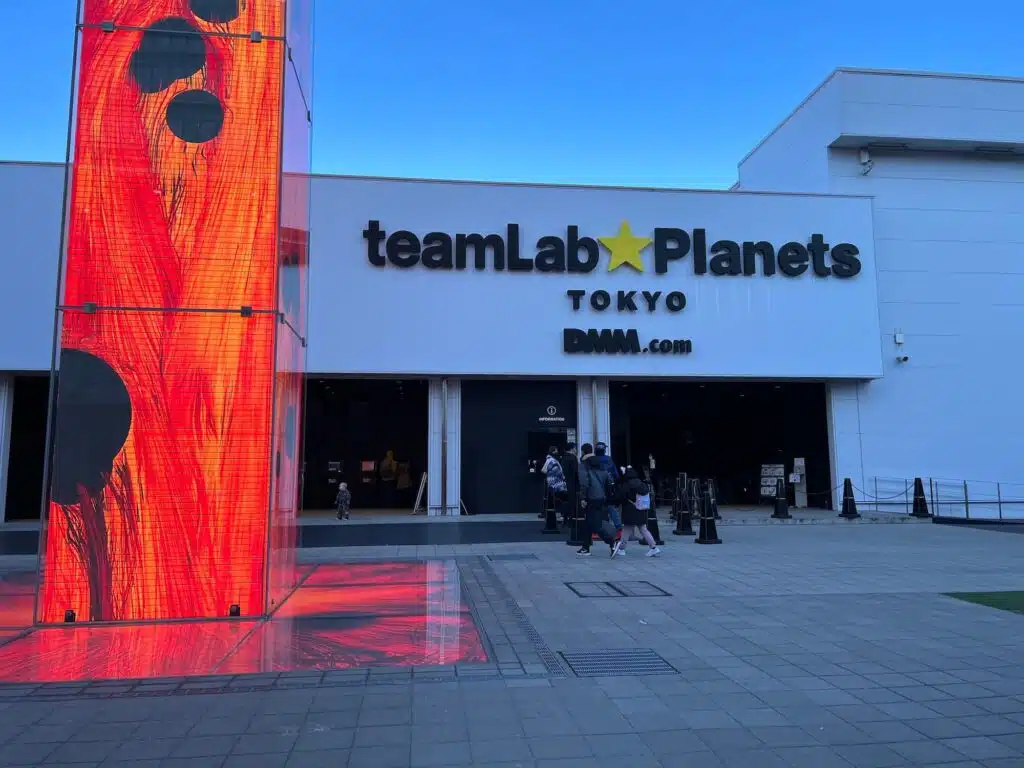
To plan this trip, I’d joined a couple of Facebook groups to scroll through and see people’s tips, recommendations, etc. and one thing that popped up over and over again was teamLab Planets Tokyo. I wasn’t really sure what it was exactly beyond the photos I’d seen, but as we were sorting out the timing for our last day, there were still tickets available, so we snagged them. It was only 3200 yen per person, so if we hated it, at least it wasn’t too expensive.
The biggest downside to teamLab Planets is that it wasn’t the easiest to get to from where we were and required a few different trains to get there. We had 9AM tickets (right when it opened) and arrived a few minutes before to find quite a line already forming. It took approximately 15 minutes before we were ushered in and shown the introductory video (in English!) that explained that we had to remove our sock and shoes and put them in a locker. There were also shorts available to rent for free if you didn’t have pants you could roll up or were wearing a skirt, as there were both water sections and rooms with mirrored floors.
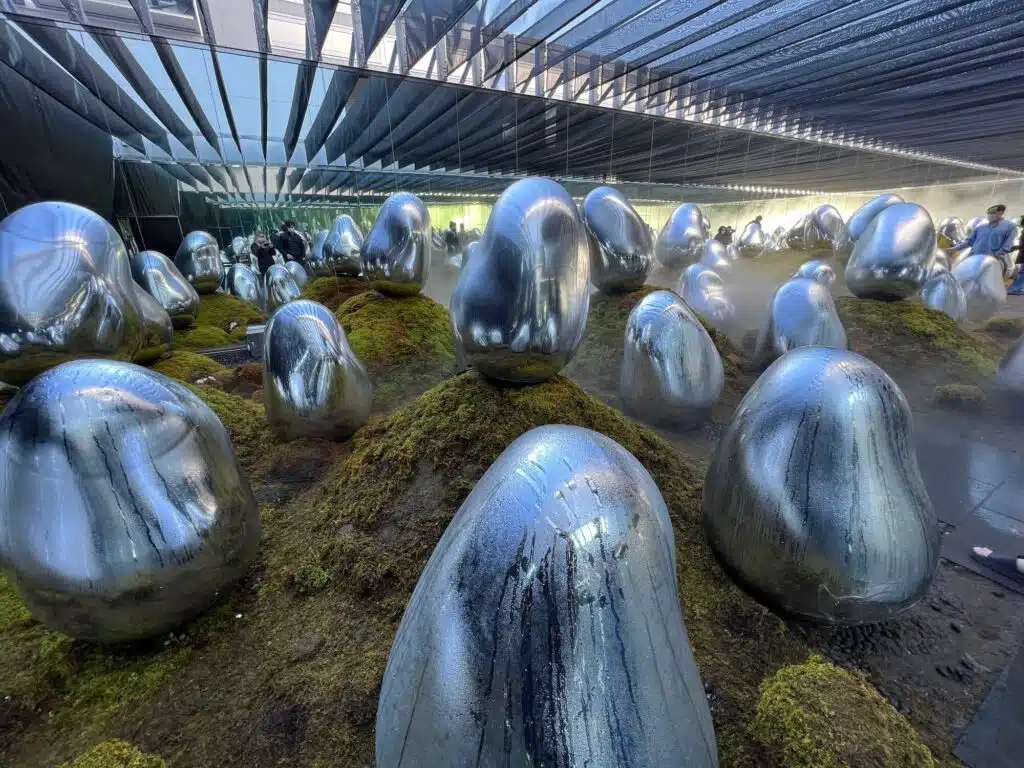
After we put our stuff away, we walked through the immersive art experience at our own pace. There were several different rooms, including one that was essentially a giant bean bag you had to crawl (or really awkwardly walk) across. The water room was full of projectors that showed fish swimming across the milky water’s surface. The water only came to about knee height on me (I’m 5’4”) but would definitely be more challenging if you had small children with you. There were also a couple outdoors rooms, which were a bit cold given the December weather, but we weren’t outside for too long. The whole experience took us about an hour to walk through, but there were no strict time limits on how long you could stay. We probably could have looped through again, but we didn’t think it would have the same impact the second time.
Tokyo Tower
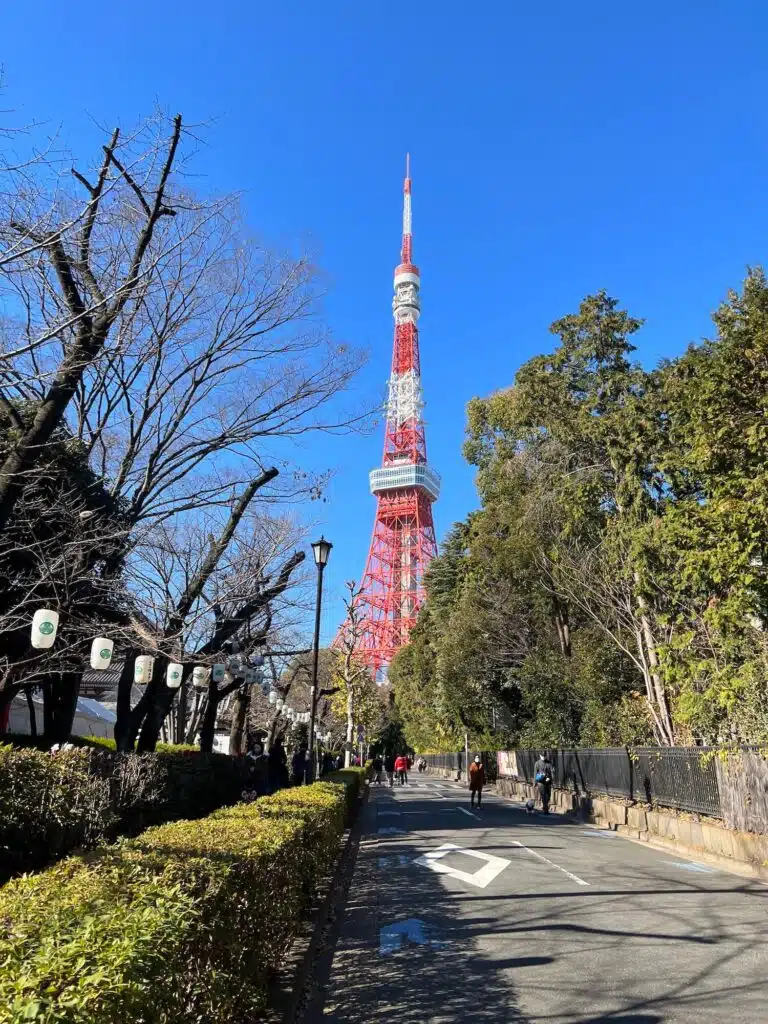
The last stop on my “list of things I’d like to try to see in Japan” was Tokyo Tower. Built in 1958 and inspired by the Eiffel Tower in Paris, the tower is definitely one of the most iconic landmarks in Tokyo.
We’d already been to the top of Shibuya Sky and Tokyo Skytree, so we didn’t really feel the need to pay 3000 yen each to go to the top of Tokyo Tower too, so we walked around the park adjacent to the tower instead and admired the tower from afar.
Tokyo Station for Lunch
Though many restaurants and shops around the city were closed for the holiday, everything was open at Tokyo Station. We had a little extra time to kill before heading to the airport, so we walked around all the shops in the train station and cobbled together lunch from a couple different shops. Despite the plethora of eateries, actually eating in the train station proved a bit of a challenge. First, there was the overwhelming number of choices that led to us struggling to make any decisions at all. Then once we actually bought food, there were very few places to sit. After we found a small seat (no table though) and ate our food, we then struggled to find a trash can to throw out our trash. It was almost like a comedy of errors trying to eat lunch but it all worked out.
I absolutely loved the 4 days we spent in/around Tokyo and recommend paying a visit to the capital city if you’re planning a trip to Japan!
You may also like:

